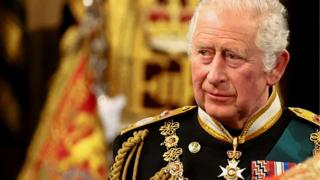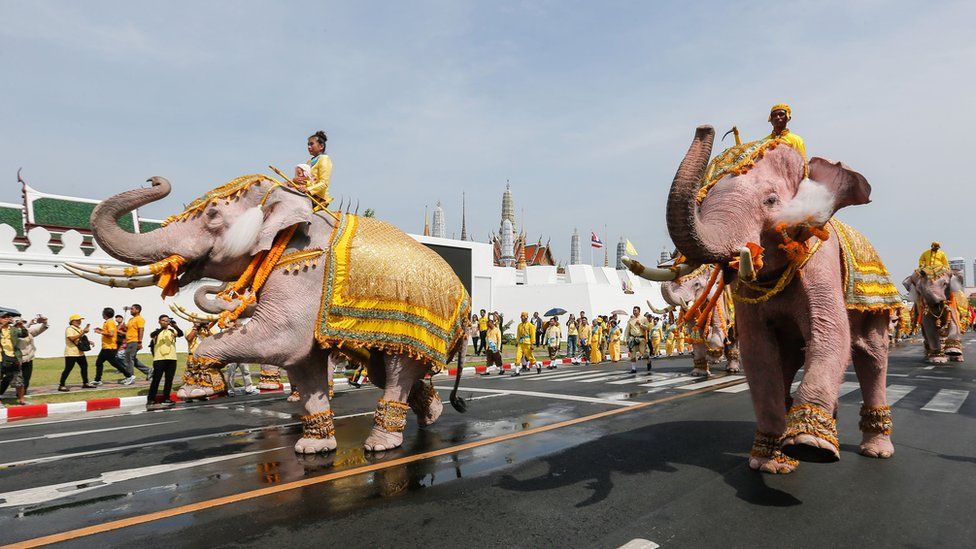
The world will be watching as King Charles III is crowned in a ceremony steeped in ancient tradition on 6 May. But in other monarchies around the globe there are equally extraordinary coronation moments.
From a crawling Queen to a throne so sacred it can never be sat on, here’s a look at how some of the world’s remaining monarchies celebrate their kings and queens.
“Monarchy runs on ritual and ceremony”, says Dr Elena Woodacre, a reader in renaissance history at the University of Winchester.
“There are elements you tend to see in different coronations”, she explains, “there’s always some kind of installation or enthronement. There’s usually regalia or ritual clothing and the sacred elements like the anointing.”
“These elements are important both for reaffirming the sovereign’s role but also reaffirming the relationship between the monarch and the subject”, she adds.
Blessed water and Thailand’s crawling Queen
King Charles III is anointed using holy oil made with a secret recipe. The Archbishop of Canterbury anoints the King’s head, chest and hands in what is considered to be the most sacred part of the ceremony emphasising the spiritual status of the sovereign who is also the head of the Church of England.
In Thailand, a similar part of the coronation ceremony involves water being poured over the new monarch to “purify” and anoint them.
The water is collected from more than 100 sources across the country between 11:52 and 12:38 local time, a special time in Thai astrology, and then blessed in Buddhist ceremonies.
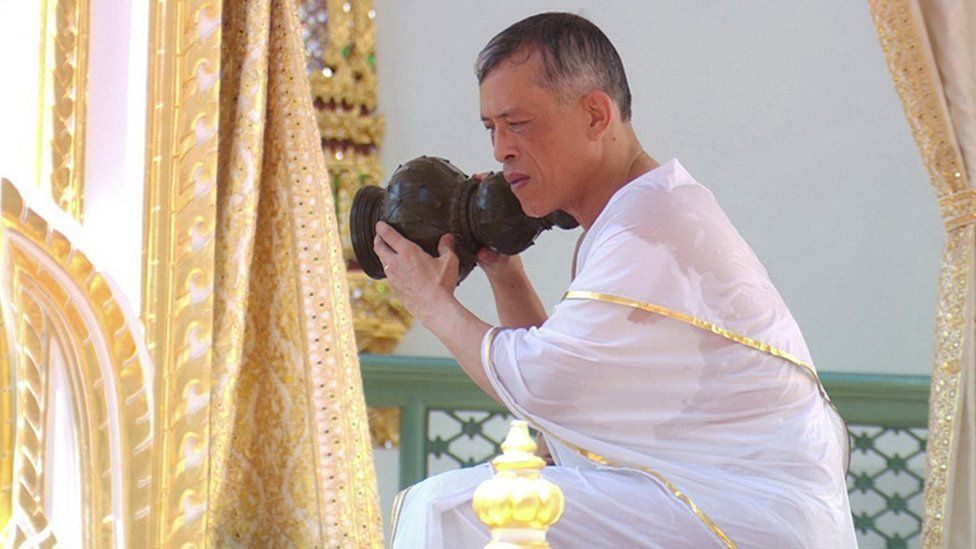
At the most recent Thai coronation, of King Maha Vajiralongkorn, his wife Queen Suthida crawled and knelt on the floor in front of him.
The posture is a traditional display of respect in a part of the ceremony known as the installation of the Queen.
The King poured anointment water from a conch shell onto Queen Suthida and granted her royal rank and status.
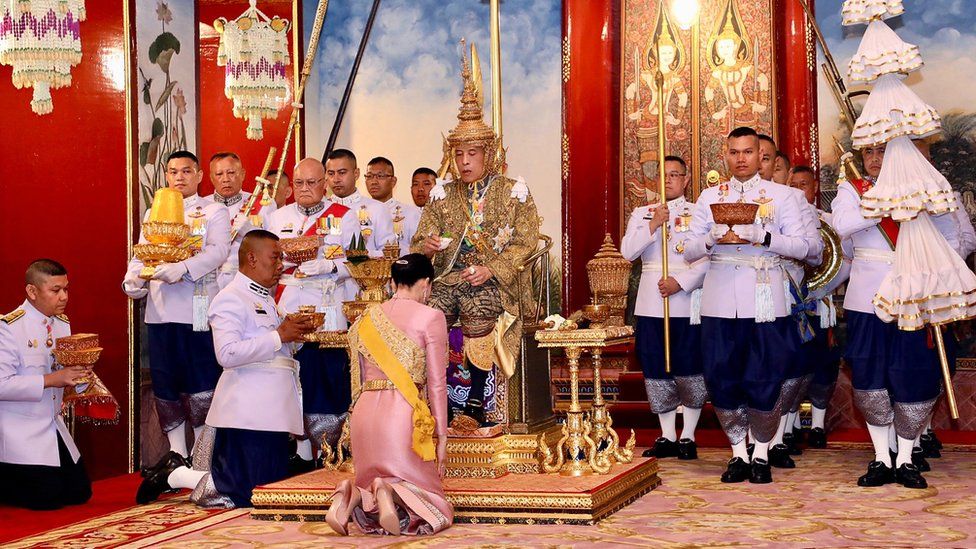
Seats too sacred to sit on
King Charles sits on the ancient Coronation Chair for much of the service.
Made from oak and more than 700 years old, it’s the oldest piece of furniture in the United Kingdom still used for its original purpose.
The chair is designed to contain the Stone of Destiny, a historic symbol used in the inauguration of Scottish kings.
The Asantehene has ruled over the Ashanti region of Ghana since the 1700s.
The most sacred object in Ashanti culture is the Golden Stool, known as the Sika Dwa Kofi, which is believed to represent the “soul” of the Ashanti people.

The stool is so holy nobody is allowed to sit on it – not even the monarch – so during the coronation the new Asantehene is raised and lowered over the stool without sitting on it.
However, in 1900 the British Governor of the Gold Coast, Sir Frederick Hodgson, demanded to sit on the Golden Stool and ordered soldiers to hunt for it.
This search sparked a revolt led by the Asante Queen Mother, Yaa Asantewaa. She was eventually defeated and Asante was annexed by the British. Their monarchy was not restored until 1935.
Canopies, curtains and cloth
The British monarch’s anointing is considered so sacred and secret, a canopy is held above the King to conceal him from view during this part of the service.
The congregation then shouts, “God Save the King!”
There are similar moments in the enthronement of the Japanese emperor.
During the ceremony, purple curtains are drawn back on a pavilion known as the Takamikura to unveil the Emperor standing in front of a throne, with an ancient sword and jewel beside him.
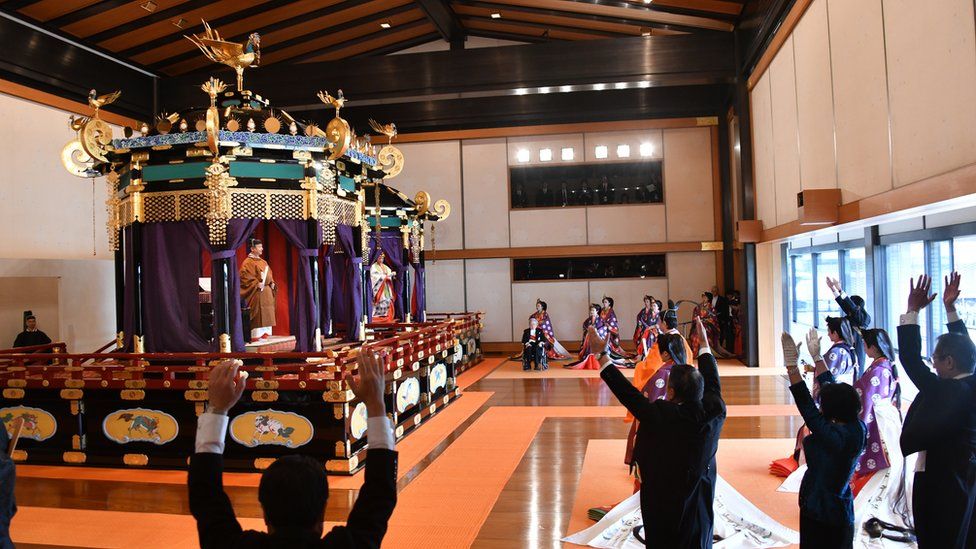
He read out a formal proclamation, dressed in a yellow-orange robe worn only by emperors on special occasions.
There were then shouts of “Banzai!”, meaning “long live the emperor”.
King Charles attended the enthronement along with hundreds of foreign dignitaries.
Feathers and lion hides
The UK monarch dons special coronation robes. As they enter Westminster Abbey, the soon-to-be-crowned sovereign wears a long red velvet robe of state, adorned with hand embroidered gold lace, and lined in expensive white fur called ermine.
They wear a different robe at the end. At the coronation of Queen Elizabeth II in 1953, she wore a seven-metre-long silk gown which had taken 3,500 hours to embroider with the emblems of the UK and Commonwealth in 18 different types of gold and silver thread.
The Zulu King is one of the most influential of South Africa’s eight monarchs and also wears special clothing during their coronation.
In the traditional Zulu ceremony, the sovereign enters a sacred cattle enclosure to call for the support of their ancestors and wears the hide of a lion they hunted to prove they are the chosen one.
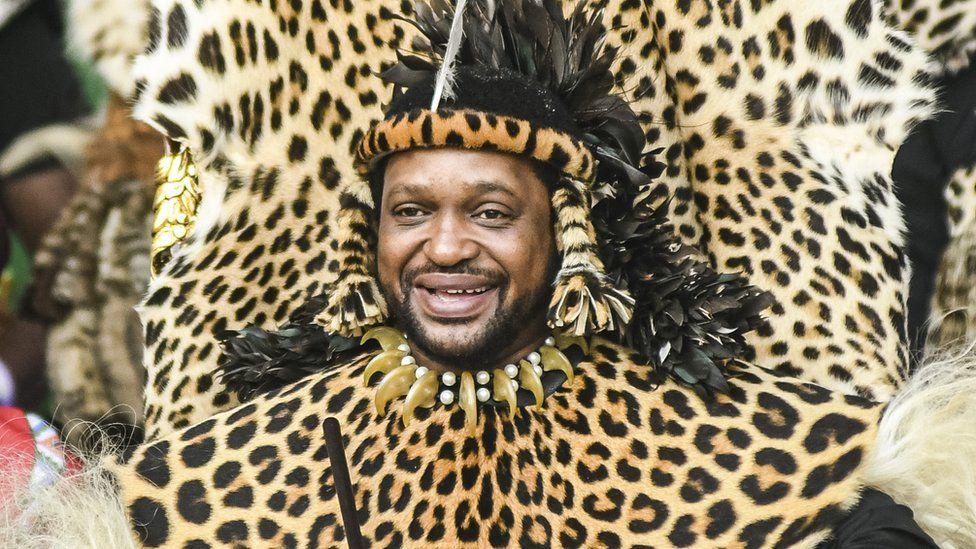
At his crowning ceremony in 2022, King Misuzulu ka Zwelithini wore leopard print and feathers as he was given a certificate of recognition by the South African President.
Calfskin crowns
Crowns are one of the most important elements of any coronation ritual, a visual symbol that marks the monarch as ruler.
In the UK, King Charles III will be crowned with the St Edward’s Crown, made of a solid gold frame set with rubies and sapphires. It’s the only time during his reign that it will ever be used.
Towards the end of the coronation ceremony King Charles will put on the 2.3lbs (1.06kg) Imperial State Crown, which is also used for official occasions like the opening of Parliament.
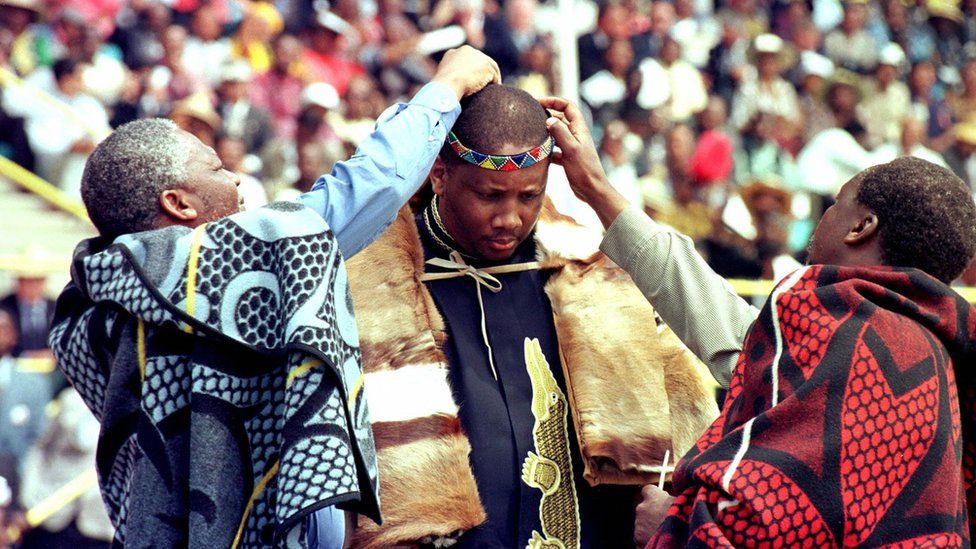
In Lesotho, a calfskin headband and feather are put on the new monarch’s head by two traditional chiefs during their coronation.
They also wear traditional animal skins and a blue tunic with an embroidered gold crocodile during the ceremony with songs and dancing.
The crowning of Letsie III took place at a sports stadium in the capital city Maseru. It was attended by King Charles and Nelson Mandela, who was then president of South Africa.


Related Topics
-
-
9 hours ago
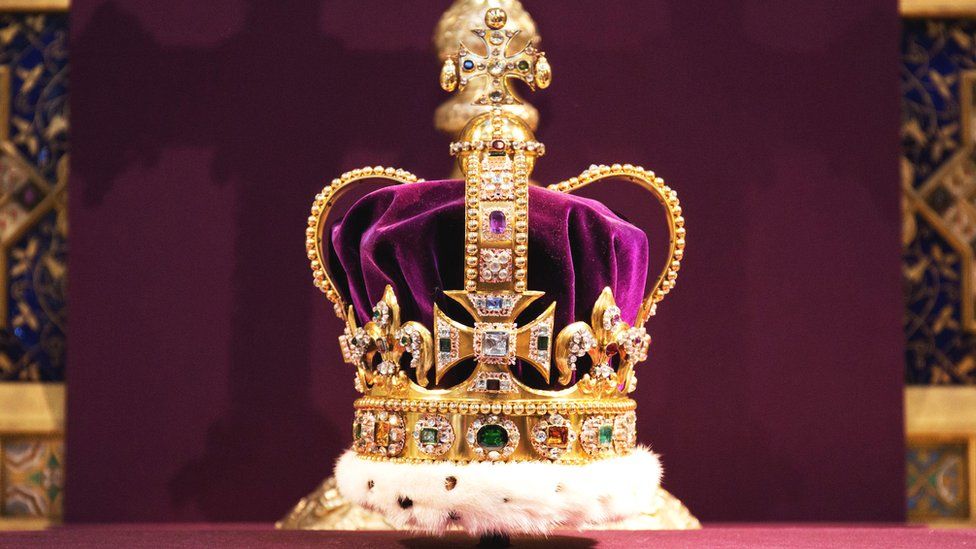
-
-
-
7 days ago
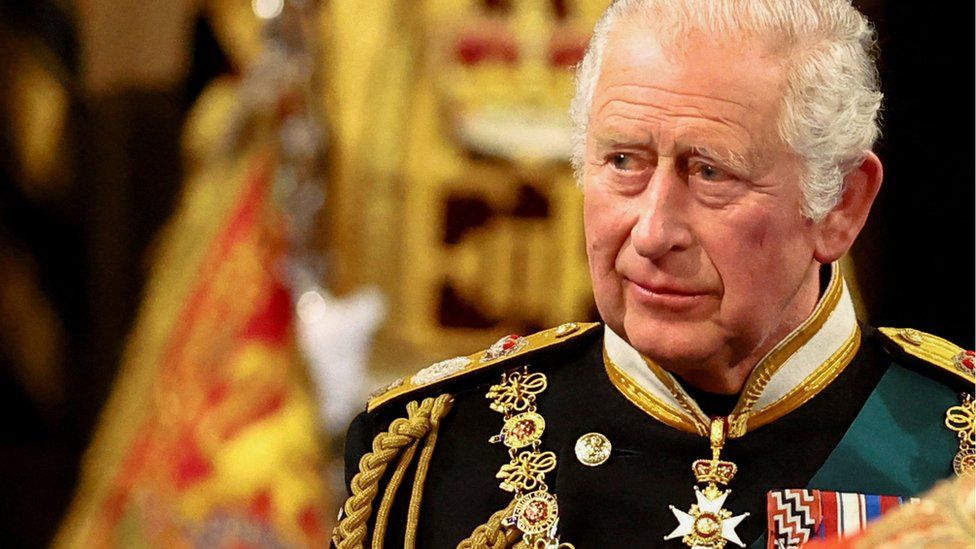
-
-
-
11 hours ago
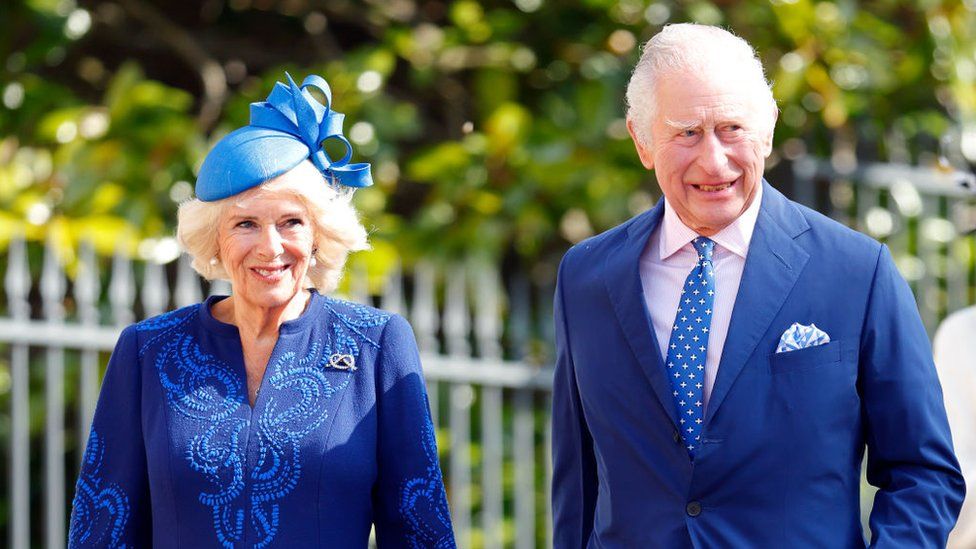
-

